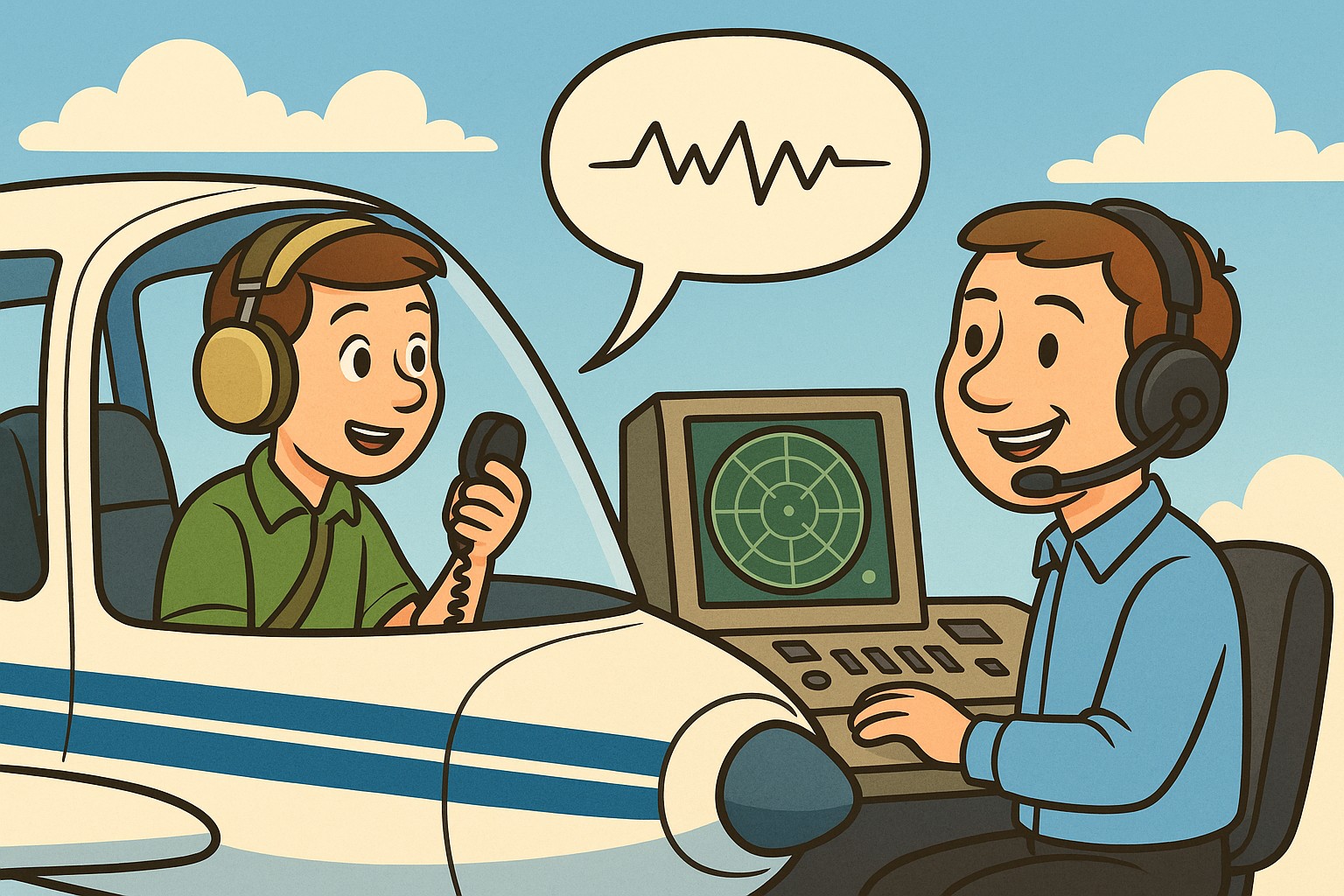Learning How to Talk to ATC: A Simple Guide for Student Pilots

Talking to Air Traffic Control (ATC) is a big part of being a safe and smart pilot. ATC helps pilots take off, land, and move around the airport safely. This guide will show you a sample conversation between a student pilot and ATC, and explain what it means in simple words.
Situation: Getting Taxi
Instructions at the Airport
Let’s pretend you are at a small airport, sitting in your airplane on the ground. You’ve finished your safety checks, and you’re ready to move to the runway and take off. You need to call Ground Control (a part of ATC) to ask for permission to taxi.
Pilot (you):
“Greenville Ground, Cessna 172SP, at the general aviation ramp, ready to taxi with information Alpha.”
ATC (Ground Control):
“Cessna 172SP, Greenville Ground, taxi to Runway 22 via Taxiway Alpha, hold short of Runway 18.”
Pilot:
“Taxi to Runway 22 via Taxiway Alpha, hold short of Runway 18, Cessna 172SP.”
What Does This Mean?
Let’s look at what the controller said and explain it step by step:
-
“Taxi to Runway 22 via Taxiway Alpha”
This means you can start moving your airplane on the ground (this is called "taxiing") along a special road called Taxiway Alpha. You’re going to Runway 22 to get ready to take off. -
“Hold short of Runway 18”
This means you must stop before you get to Runway 18. Do not cross that runway unless the controller says you can. This is very important to keep everyone safe.
Important Words to Know
Tips for Talking to ATC
Always pay close attention to what the controller says. If you don’t understand, it’s okay to ask them to repeat it. Say, “Say again.”
Always say back what they told you. This is called a “readback.” It helps the controller know you understood.
Use aviation words like “Affirmative” for yes and “Negative” for no. Don’t use casual words like “Yeah.”
Watch signs and lines on the taxiways and runways. Look around so you don’t get lost or go the wrong way.
What to Do When
You’re Told to Hold Short
Example: “Hold short of Runway 18, Cessna 172SP.”
On the ground, you will see yellow lines before the runway. Stop before those lines.
Do not go past the line until ATC gives you permission.
What If You’re Not Sure?
Even experienced pilots sometimes get confused. If that happens to you, it’s okay!
-
Ask Again:
Example: “Greenville Ground, Cessna 172SP, can you confirm hold short of Runway 18?” -
Ask for Help:
If you don’t know where to go, say: “Request progressive taxi.” This means the controller will guide you step by step.
Why This Is So Important
Listening to ATC and doing what they say helps keep you and everyone else safe. If you go on a runway without permission, it could cause a very dangerous situation. That’s why it’s super important to stop when told and always follow directions.
Practice Makes Perfect
Learning how to talk to ATC takes time. The more you practice, the better you will get. Use flight simulators, watch YouTube videos of real radio calls, and try talking like a pilot. Ask your flight instructor to quiz you or pretend to be ATC.
For more on that here's a classic book called "Say again, Please."
Final Thoughts
Talking to ATC is like learning a new language. But don’t worry—it gets easier with practice. Just remember to:
- Listen
- Repeat the instructions
- Ask if you’re unsure
- Stay safe by following all directions
Fill out the information below and we will get you started. You’ll be a confident and clear communicator in no time!